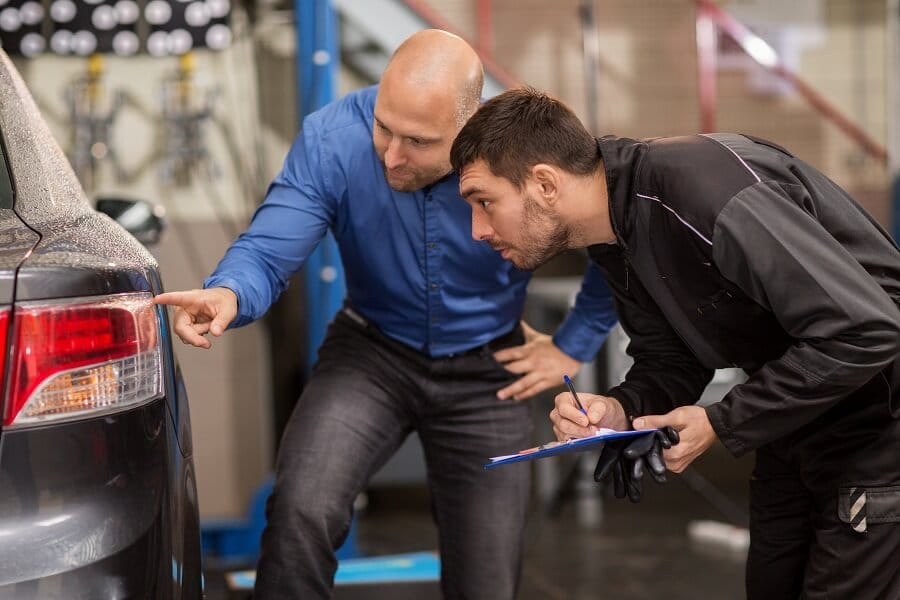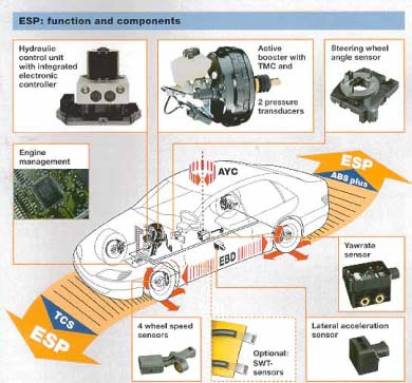Importance of Accident Car Prevention Strategies

Accident car prevention strategies play a crucial role in reducing the number of road accidents and improving overall road safety. These strategies are essential as they help to minimize the risk of accidents and the potential for harm to drivers, passengers, and pedestrians. By implementing effective prevention strategies, it is possible to save lives, prevent injuries, and reduce the financial burden associated with accidents. It is imperative that individuals, organizations, and governments prioritize the development and implementation of these strategies to ensure safer road conditions for everyone.
Overview of Accident Car Prevention Strategies
Accident car prevention strategies encompass a range of tactics aimed at reducing the occurrence and severity of car accidents. These strategies involve various approaches, including defensive driving techniques, regular vehicle maintenance, driver education and training, and the use of innovative technologies and safety features. Implementing a comprehensive set of prevention strategies can significantly contribute to improving road safety and reducing the number of accidents on our roads.
Benefits of Implementing Prevention Strategies

Implementing accident car prevention strategies can bring a range of benefits to individuals, communities, and society as a whole. By utilizing defensive driving techniques, practicing regular vehicle maintenance, promoting driver education and training, and incorporating innovative technologies and safety features, the occurrence and severity of accidents can be significantly reduced. This leads to fewer injuries, fatalities, and property damage, as well as cost savings in terms of medical expenses, insurance claims, and vehicle repair. Additionally, the implementation of prevention strategies promotes a culture of road safety, creating safer and more responsible drivers.
Defensive Driving Techniques

Defensive driving techniques play a crucial role in preventing car accidents. By remaining aware and attentive on the road, drivers can anticipate potential hazards and react accordingly. These techniques include maintaining a safe following distance, being mindful of blind spots, practicing proper lane discipline, and avoiding distractions. Implementing defensive driving techniques can significantly reduce the risk of accidents and contribute to overall road safety.
Understanding Defensive Driving

Defensive driving is a set of techniques and strategies that drivers can use to minimize the risk of accidents. It involves maintaining a proactive and cautious approach while on the road. Drivers who practice defensive driving are constantly aware of their surroundings, anticipate potential hazards, and make quick decisions to avoid collisions. By implementing defensive driving techniques, individuals can contribute to safer road conditions for themselves and other motorists.
Applying Defensive Driving Techniques

Applying defensive driving techniques is crucial for ensuring road safety. Drivers can start by maintaining a safe distance from other vehicles, especially during unfavorable weather conditions. They should also avoid distractions, such as using mobile devices, and always signal their intentions to other drivers. Additionally, drivers must constantly scan the road, anticipate potential hazards, and be prepared to react quickly. By implementing these techniques, drivers can reduce the risk of accidents and promote safer road conditions for everyone.
Regular Vehicle Maintenance

Regular vehicle maintenance is essential for accident prevention. By regularly servicing and inspecting their vehicles, drivers can identify and address any potential mechanical issues that could lead to accidents. This includes checking the brakes, tires, lights, and fluid levels, as well as ensuring that all safety features are functioning properly. Regular maintenance helps ensure that the vehicle is in optimal condition, reducing the risk of malfunctions or breakdowns that could result in accidents.
The Impact of Vehicle Maintenance on Accident Prevention

Regular vehicle maintenance plays a crucial role in accident prevention. By ensuring that vehicles are regularly serviced and inspected, drivers can identify and address any potential mechanical issues that could lead to accidents. Well-maintained brakes, tires, lights, and fluid levels, along with properly functioning safety features, reduce the risk of malfunctions or breakdowns that could result in accidents. Prioritizing vehicle maintenance helps to keep vehicles in optimal condition and promotes overall road safety.
Essential Maintenance Tips for Accident Prevention

Regular vehicle maintenance is essential for accident prevention. Here are some essential maintenance tips for ensuring vehicle safety:
- Regularly check and maintain brakes, tires, lights, and fluid levels.
- Follow the recommended service schedule for oil changes and filter replacements.
- Inspect and replace worn-out windshield wipers and rearview mirrors.
- Keep the vehicle clean to improve visibility and prevent obstructions.
- Check and maintain safety features such as airbags and seat belts.
- Conduct regular inspections for any signs of damage or malfunction.
By following these maintenance tips, drivers can reduce the risk of mechanical failures and ensure their vehicles are in optimal condition for safe driving.
Driver Education and Training

Driver education and training play a crucial role in preventing car accidents. A well-educated and trained driver is more likely to make safe decisions and respond effectively in challenging situations. Effective training programs focus on defensive driving techniques, hazard perception, and decision-making skills. By promoting driver education and training, we can enhance road safety and reduce the risk of accidents.
The Role of Driver Education in Preventing Car Accidents

Driver education plays a crucial role in preventing car accidents by equipping drivers with the knowledge and skills needed to make safe decisions on the road. Through driver education programs, individuals learn about important traffic laws and regulations, defensive driving techniques, and the importance of being alert and cautious while driving. By promoting driver education, we can create a safer driving culture and reduce the risk of accidents.
Effective Training Programs for Accident Prevention

Effective training programs are essential for accident prevention as they provide drivers with the necessary skills and knowledge to make safe decisions on the road. These programs focus on teaching defensive driving techniques, traffic laws, and the importance of being alert and cautious while driving. By incorporating interactive and hands-on learning experiences, such as driving simulators and mock scenarios, these programs effectively prepare drivers to handle challenging situations and avoid potential accidents.
Technology and Safety Features

Technology and safety features play a crucial role in preventing car accidents. Advanced technologies such as collision warning systems, adaptive cruise control, and lane departure warning systems help drivers avoid potential collisions. These features provide real-time alerts and assistance, enhancing driver awareness and reducing the risk of accidents. Implementing these technologies in vehicles can significantly contribute to accident prevention and promote road safety.
Innovative Technologies for Car Accident Prevention

Innovative technologies are playing a significant role in preventing car accidents. Collision warning systems use sensors to detect potential collisions and provide real-time alerts to drivers. Adaptive cruise control automatically adjusts the speed of the vehicle to maintain a safe distance from the vehicle in front. Lane departure warning systems alert drivers if they unintentionally drift out of their lane. These advanced technologies enhance driver awareness and reduce the risk of accidents by providing timely assistance and alerts.
Advantages of Safety Features in Preventing Car Accidents

Safety features in vehicles play a significant role in preventing car accidents. These technologies, such as collision warning systems, adaptive cruise control, and lane departure warning systems, provide real-time alerts and assistance to drivers. The advantages of these safety features include enhanced driver awareness, reduced risk of collisions, and potential avoidance of severe accidents. Implementing these features in vehicles promotes safer driving and helps prevent accidents on the road.
Conclusion

In conclusion, implementing accident car prevention strategies is crucial in promoting road safety and reducing the risk of collisions. A combination of defensive driving techniques, regular vehicle maintenance, driver education and training, and advanced safety features can significantly contribute to accident prevention. By adopting these strategies, individuals can play an active role in creating a culture of road safety and protecting themselves and others on the road.
The Importance of Implementing Multiple Prevention Strategies

Implementing multiple prevention strategies is crucial in promoting road safety and reducing the likelihood of accidents. Combining defensive driving techniques, regular vehicle maintenance, driver education and training, and advanced safety features can significantly enhance accident prevention efforts. This multi-faceted approach ensures that various aspects of accident prevention are addressed, increasing the effectiveness of overall prevention measures. By implementing multiple strategies, individuals and organizations can work towards creating a safer road environment for everyone.
Promoting a Culture of Road Safety

Promoting a culture of road safety is essential in reducing car accidents and ensuring the well-being of individuals on the road. By creating awareness about the importance of safe driving practices and encouraging responsible behavior, a culture of road safety can be established. This can be achieved through educational campaigns, enforcing traffic laws, and fostering a sense of personal responsibility among drivers. By collectively prioritizing road safety, individuals and communities can contribute to a safer and accident-free environment.